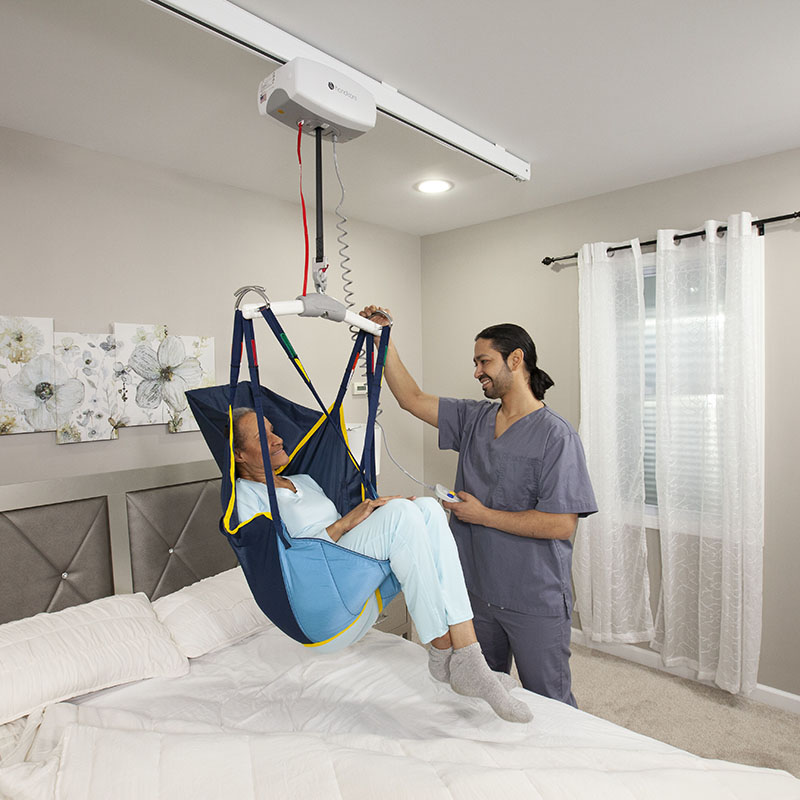Patients lift systems allow caregivers, healthcare professionals and patients to transfer safely and elevate their patients. These systems are perfect for those with limited mobility. This includes seniors or those with disabilities, as well as patients recovering after surgery or injury.

There are a variety of kinds of lift systems that are suitable that are suited to patients, including overhead Hoyer lifts and mobility lifts. This article will discuss the benefits of each of these systems.
Mechanical lift transfer
Mechanical lift transfer is a type of lift for patients which uses a hydraulic or electric mechanism to lift and transfer patients. The system is composed of three elements that include a lift unit, a sling and a wheeled base. The lift unit is linked to the sling that is tied around the patient. It lifts them up from a lying or sitting position.
Mechanical lift transfers are an effective method for ensuring safe transfers of patients because it minimizes the chance of injuries to both the patient as well as the caregiver. It also reduces physical stress on the body of the caregiver since the lift unit handles the majority of the lifting. Mechanical lift transfers are simple to maneuver within small areas. This makes them an excellent choice for home care.
Overhead hoyer lift
The overhead Hoyer lift makes use of an overhead track for the transfer of patients. It is made up of a track mounted on the ceiling, and the lift unit attached to it. A sling wraps around the individual.
The overhead Hoyer lift offers a quick and secure method of moving patients from one room to another. It also permits a simple transfer from bed to a wheelchair or commode, reducing the risk of injury and falls.
The overhead Hoyer lift has the advantage of creating more floor space because it’s suspended from ceiling. This is especially useful in rooms or areas with limited space. Hoyer overhead lifts are also able to be able to handle heavier weights, making them suitable for patients suffering from bariatric disorders.
Mobility lift systems
Mobility lift systems are designed for people who have restricted mobility in getting in their home or other places. They consist of an articulating base unit with wheels and an elevated lift with a sling attached. The patient sits in the sling and is lifted up by the lift arm allowing the patient to move around.
Mobility lifts are great for those who require help with their mobility, but cannot walk or stand on their on their own. They are an efficient and secure method of transportation that helps patients maintain their mobility and independence, as well as their quality of life.
Mobility lifts that are portable systems is a major benefit. Mobility lifts are easy to transport from one location to another. This is why they are a good choice for different environments. Mobility lifts are simple to operate, and require little physical effort from the caregivers.
Selecting the most suitable patient lift system
To select the most appropriate system for your patient, you need to consider a variety of factors, including the weight of the patient, their size and mobility in addition to the location that the lift system intended to be used. Think about the capabilities of the caregiver as well as limitations, as well as the budget when choosing a patient lift system.
Patients with mobility issues and the necessity of frequent transfers with the overhead Hoyer lift is a fantastic alternative. It’s easy to use, safe, and efficient for transfers of patients. It’s costly and require installation, so it is more suited to long-term health facilities.
Mechanical lift transfer can be a valuable tool in a home care setting. It is easy to use, requires minimal physical effort from caregivers and is a reasonable cost. It’s important to spend the time needed to assess your needs prior to purchasing the equipment. To make sure you’re making the right choice, start by completing research and speaking with industry experts – doing this will increase the chances that you will ultimately find the right product that will meet your specific requirements and falls within your budget. Hopefully once you have all the data and facts to make a choice, deciding on mechanical lift transfer options will be effortless!
For more information, click mechanical lift transfer